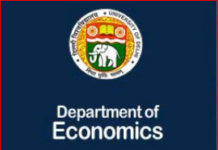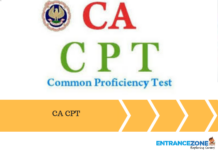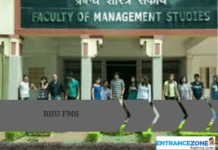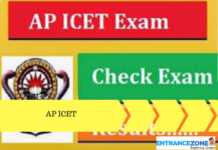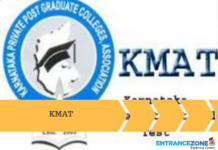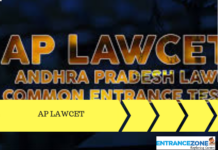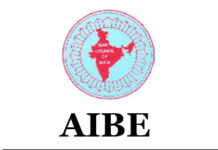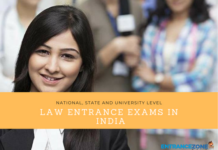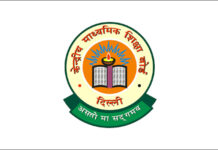NCERT Class 10 Solutions Social Science 2024 is available here for free download in pdf format. The National Council of Educational Research and Training (NCERT) is an autonomous Indian government entity that designs CBSE and state board syllabi. As a result, students taking various board exams in Class 10 can use this NCERT Syllabus to aid them in practice for their exams and achieving a good result. The NCERT Class 10 Social Science work was published by academics, professors, and teachers to enable students to understand the material effectively and achieve higher grades in their examinations. Learn more about NCERT Class 10 Social Science chapter-by-chapter information and download NCERT Class 10 Social Science Solutions PDF in the article below.
Admission Open 2023
- Top University & Colleges Official Links, Application & Scholarship Forms.
The NCERT Class 10 Solutions Social Science consists of a total of four subjects. The first being History, which contains eight chapters. The second subject refers to Civics and has eight chapters. The third subject is Geography and it contains seven chapters in total. The fourth and last subject is Economics which has five chapters.
NCERT Class 10 Science Social Solutions Subject 1: History
Chapter 1: The Rise of Nationalism in Europe
Subscribe to Get Updated Information about NCERT Class 10 Solutions Social Science 2025: Download Chapter-wise Solutions PDF - Admissions
The first chapter consists of 10 questions ( 5 short answer questions + 4 long answer questions). The questions given are not too difficult to solve. The chapter includes a project work, in which students have to amass necessary information on nationalist symbols in countries apart from Europe.
Chapter 2: The Nationalist Movement in Indo-China
The chapter consists of a total of nine questions, out of which 4 are short answer questions, while 5 are long answer questions. In the project work, the students have to gather information and details of anti-imperialist movement in any one country of South America and also have to include the conversation that took place between two freedom fighters
Chapter 3: Nationalism in India
The third chapter consists of eight questions, with equal division. 4 of them being short answer questions and 4 of them being long answer questions. The project work emphasises on the accumulation of information on the anti-colonial movement in Kenya, along with drawingut comparison of it with the Indian National Movement.
Chapter 4: The Making of a Global World
A total of nine questions are provided in this chapter where 5 questions are short answer questions while the rest 4 are long answer questions. The project work of this chapter specifies collecting data on gold and diamond mining in South Africa during the 19th century.
Chapter 5: The Age of Industrialisation
The fifth chapter contains a total of seven questions out of which the first 4 questions are short answer type and the remaining 3 are odf long answer type. The second question is the true or false type. In the project work, the students have to choose any type of industry and research its history.
Chapter 6: Work Life, and Leisure
The chapter includes a total of 8 questions. 4 are short answer types while other 4 are long answer types. In the project work, the students have to observe any one of the mumbai movies mentioned in this chapter.
Chapter 7: Print, Culture and the Modern World
The seventh chapter has 7 questions in total, where the first 3 are short answer questions. The last 4 questions are long answer types. For the project, students need to do research about the changes and transmission in the printing technology in the last 100 years.
Chapter 8: Novels, Society and History
There are a total of 8 questions in this chapter. First 3 questions are short answer types while the remaining 5 questions are long answer types. According to the project, students have to research and write about society and customs, depending on the two novels of the 20th century.
NCERT Class 10 Science Social Solutions Subject 2: Civics
Chapter 1: Power Sharing
The chapter contains a total of nine questions. The first two questions are short answer types. The 3rd, 4th, and 5th are Valuable Based Questions and the 6th, 7th, 8th, and 9th questions are MCQs.
Chapter 2: Federalism
The chapter has 12 questions, out of which first 2 questions are map questions, 3rd, 4th, and 5th are short answer types. The 6th question fills in the blanks, the 7th question is the Value Based Question. The remaining 5 questions are MCQs of different types.
Chapter 3: Democracy and Diversity
The 3rd chapter consists of nine questions. The first 3 questions are short answer types, the 4th question is the fill in blanks. The 5th, 6th, 7th and 8th questions are MCQs and the last question is the Value Based Question.
Chapter 4: Gender, Religion and Caste
In this chapter, there are 12 questions. The first 6 questions are short answer type questions, questions from 7 to 10 and 12th are MCQs, while the 11th question is the fill in the blank question.
Chapter 5: Popular Struggles and Movements
The chapter has 11 questions in total. The first 5 are short answer type questions, the 6th one is the fill in the blank. Questions from 7 to 10 are MCQs while the last question is the Value Based Question.
Chapter 6: Political Parties
In this chapter, there are 11 questions, out of which the first 5 are short answer types while the 6th question is, fill in the blanks. Questions from 7 to 10 are MCQs and the last question is Value Bases Question.
Chapter 7: Outcomes of Democracy
A total of 8 questions are there in the chapter. The first 2 questions sare short answer types while the 3rd, 4th and 8th are Value Based questions. The 5th, 6th and 7th are MCQs.
Chapter 8: Challenges to Democracy
This chapter has no complex exercises, however, intext questions are available which mainly includes the fill in the blanks and tests the critical thinking of the students.
NCERT Class 10 Science Social Solutions Subject 3: Geography
Chapter 1: Resources and Development
In this chapter, there are a total of 3 questions and 4 projects. The first question consists of 5 MCQs. The second question has 4 short answer type questions. The third question has two long answer type questions. In the project work, the 1st project asks to research and gather information on consumption and conservation of resources in the society/locality. The 2nd project refers to the discussion on the conservation of several and different resources consumed in the school. The 3rd project specifies on the topic- food for thought, whie the last project includes the solution of crossword puzzle.
Chapter 2: Forest and Wildlife Resources
The chapter has a total of five questions, out of which the first 2 questions are the MCQs. The 2nd and 3rd questions match the following. The 4th question has two short answer types while the last question has 2 long answer types.
Chapter 3: Water Resources
There are 3 questions in this chapter out of which the 1st question contains 3 MCQs, the 2nd question contains 2 short answer type questions, while the last question contains 2 long answer type questions.
Chapter 4: Agriculture
This chapter consists of 3 questions, 2 projects and 1 activity. The first 2 questions have 4 MCQs, the third question has 3 sub questions. The 1st project asks to have group discussion on the topic – the necessity of literacy among farmers. Following this, the second project asks to observe a present area of wheat production on the outline map of India. The activity is basically solving a crossword puzzle.
Chapter 5: Minerals and Energy Resources
This chapter has 3 questions and 1 activity. The 1st question contains 4 MCQs, the 2nd question has 4 short answer type questions, and the 3rd question has 2 long answer types of questions. The activity is to fill in the appropriate name of the mineral in the given box.
Chapter 6: Manufacturing Industries
The chapter has 3 questions in total, 2 activities, and 1 project. The first question contains the MCQs, the second question contains 5 short answer type questions, and the third question has 3 long answer type questions. In the project work, it is asked to choose any one of the agro-based and mineral based industries and answer the questions given in the book. In the activity, the 1st is to give one word for the following in reference with the industry while the 2nd one is to solve the crossword puzzle.
Chapter 7: Lifelines of National Economy
There are a total of 3 questions on the chapter, out of which the 1st question haa 6 MCQs. The 2nd question has 4 short answer type questions. The last question has a long answer type question. It is then followed by a quiz where the student has to give a relevant answer to the questions mentioned. Research of appropriate words from the word clouds is the activity.
NCERT Class 10 Science Social Solutions Subject 4: Economics
Chapter 1: Development
The 1st chapter contains a total of 13 questions. The first 3 questions contain the MCQs, meanwhile the remaining questions are short answer type and long answer type questions. However, in the 7th question, the answer asks for additional justification to the viewpoint with a statement and the 12th question asks for the analysis of the information.
Chapter 2: Sectors of Indian Economy
In this chapter, there are 24 questions. The 1st question refers to the fill in the blanks, the 2nd question has 4 MCQs, the 3rd question matches the following, the 4th question asks to find the odd one out and the 5th question requires to make a comparison table and answer the given question. The remaining questions included a mix of short and long answer types of questions. However, the last question asks to analyze the information given and answer the questions.
Chapter 3: Money and Credit
The chapter contains 13 questions in total, out of which the 12th question asks to fill in the blanks, the last question is objective type, and the rest of the remaining questions are short and long answer type questions
Chapter 4: Globalisation and the Indian Economy
The 4th chapter of the subject Economics consists of 13 questions. The first question is fill the blanks type. The 12th question asks to match the following, the last question has 3 MCQs. The left out questions are long and short answer type questions.
Chapter 5: Consumer Rights
The last chapter has 13 questions. The first 11 questions include a blend of short and long answer type questions. The last two questions match the following and true or false, respectively.
NCERT Class 10 Science Social Solutions Subject 1: History
| Chapter Names | Links to Download Solution PDFs |
| Chapter 1: The Rise of Nationalism in Europe | Download Solution PDF |
| Chapter 2: Nationalism in India | Download Solution PDF |
| Chapter 3: The making of Global World | Download Solution PDF |
| Chapter 4: The Age of Industrialization | Download Solution PDF |
| Chapter 5: Print Culture and the Modern World | Download Solution PDF |
NCERT Class 10 Science Social Solutions Subject 2: Civics
| Chapter Names | Links to Download Solution PDFs |
| Chapter 1: Power Sharing | Download Solution PDF |
| Chapter 2: Federalism | Download Solution PDF |
| Chapter 3: Democracy and Diversity | Download Solution PDF |
| Chapter 4: Gender, Religion and Caste | Download Solution PDF |
| Chapter 5: Popular Struggles and Movements | Download Solution PDF |
| Chapter 6: Political Parties | Download Solution PDF |
| Chapter 7: Outcomes of Democracy | Download Solution PDF |
| Chapter 8: Challenges to Democracy | Download Solution PDF |
NCERT Class 10 Science Social Solutions Subject 3: Geography
| Chapter Names | Links to Download Solution PDFs |
| Chapter 1: Resources and Development | Download Solution PDF |
| Chapter 2: Forest and Wildlife Resources | Download Solution PDF |
| Chapter 3: Water Resources | Download Solution PDF |
| Chapter 4: Agriculture | Download Solution PDF |
| Chapter 5: Minerals and Energy Resources | Download Solution PDF |
| Chapter 6: Manufacturing Industries | Download Solution PDF |
| Chapter Lifelines of National Economy | Download Solution PDF |
NCERT Class 10 Science Social Solutions Subject 4: Economics
| Chapter Names | Links to Download Solution PDFs |
| Chapter 1: Development | Download Solution PDF |
| Chapter 2: Sectors of the Indian Economy | Download Solution PDF |
| Chapter 3: Money and Credit | Download Solution PDF |
| Chapter 4: Globalisation and the Indian Economy | Download Solution PDF |
| Chapter 5: Consumer Rights | Download Solution PDF |

